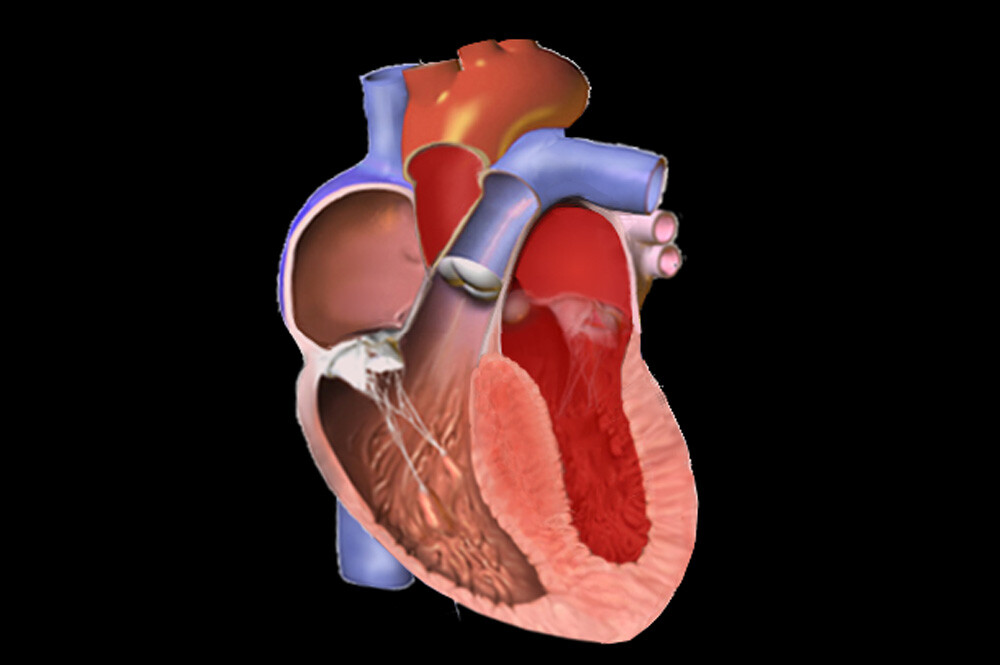6 Real Medical Treatments That Sound Like Quackery

Modern medicine is built on an ancient and robust foundation of quackery, unmatched by any other major science. Treatments involving leeches, cocaine, ass-play, or all of the above have evolved into these equally stupid-sounding techniques, proving that medical history, like political history, is cyclical. The only difference is these therapies actually work ...
Killing Heart Muscles With Alcohol To Prevent Heart Attacks
Most people go to the hospital to prevent heart attacks. But a few, who have exhausted other treatments, go for the opposite reason. It's called alcohol septal ablation, and think of it as a medical "hair of the dog." To preempt future heart attacks, doctors literally shoot alcohol into your heart in a controlled, clinical setting. It's typically used to treat hypertrophic cardiomyopathy, a thickening of the heart muscle. And unlike the swole biceps and pecs that inspire praise from gym bros (what, you thought you were going to get compliments from girls?), thick cardiac muscle kills you by blocking blood flow.

So when other options are infeasible, doctors thread a balloon-tipped catheter through an artery in the groin and into the heart, where it delivers a shot of pure alcohol— oh, wow, suddenly the heart attack sounds not so bad. Like alcohol entering through the mouth, it kills and shrinks cells, allowing blood to pass through the thinned scar tissue (sick-ass potential band name) that remains. And despite its seemingly quacky nature, septal ablation offers multiple benefits.
It only takes a couple of hours and requires just a day or two of downtime, limiting patients' exposure to hospital food. Plus, it's minimally invasive, compared to traditional operations that open you up like the Griswold family Christmas turkey. Consider the case of 71-year-old Consuelo Moore, owner of one enlarged heart. She chose septal ablation instead of surgery and was out of the hospital and clipping cat litter coupons a couple of days after receiving an alcohol injection straight to the ticker.
Infecting People With Parasitic Worms To Treat Inflammatory Disorders
Doctors are making people drink worm eggs. That's not the intro of a Dateline hidden camera exposé and major lawsuit; it's an experimental therapy using inflammation-suppressing parasitic worms. And a medical curveball for sure—who'd have guessed that future medicine would be less Star Trek and more Fear Factor.
Parasitic worm infections seem to dampen the immune system, so it doesn't attack its own tissues, at least as much. With a disease like multiple sclerosis (MS), the body cannibalizes nerve cells, disrupting bodily movement and basic functions. So people like Jim Turk, who used to run marathons for fun, are eager to try new treatments. That's why he jumped at the opportunity to drink 2,500 microscopic pig whipworm eggs every two weeks for three months.

Others, like Herbert Smith (understandably a pseudonym), chose self-treatment. A long-time Crohn's disease sufferer, he underwent multiple operations to remove part of his small intestine. And when other interventions failed, he spent $4,000 on a three-month supply of those same worms, shipped from Europe. Both experienced significant relief and decreased inflammation, with Smith's symptoms all but vanishing. But neither was able to continue treatment. And despite dramatic results for some, it's still a mixed bag overall.
"But why pig-worms, Cracked, that's gotta be a Hippocratic violation, no?" Actually, that's what makes it safe. Pig-infecting worms don't survive long in humans, mitigating the risk of chronic infections or cross-contamination with loved ones or, say, unscrupulous masseuses.

One theory is that the decline of parasitic infections is linked with inflammatory disorders like multiple sclerosis, asthma, rheumatoid arthritis, and eczema, among others. And the "old friends hypothesis" states that parasites inhabited human bodies for millennia and evolved step-in-step with us, their gracious hosts. In gratitude, they offered immune boosts. Now those are disappearing as we become more hygienic.
And it's true that populations from developing, parasite-prevalent regions have a less-inflammatory balance of intestinal flora than their fancy shoe-wearing, city-slicking counterparts. It's thought that these parasites out-compete more harmful bugs and stimulate mucus production in the gut, feeding the good bacteria. The future of medicine may depend on replicating these inflammation-squashing effects without having to chug parasitic worms. Unless, of course, you want to.
Fighting Tumors With Fevers
Unlike most old-timey doctors, William B. Coley saved lives. He pioneered a useful new fever-based cancer-fighting technique by injecting people with a bacterial concoction known as "Coley's Toxins" or "Coley Fluid" – nowadays, doctors lose their licenses for giving patients their special fluid.

via Wiki Commons
Around the turn of the 20th century, bone surgeon Coley noted that sarcoma patients experienced miraculous tumor remission after developing high fevers due to streptococcal skin infections. And though few terms incite as much horror as "20th-century bone surgeon," Coley favored science over sticking leeches into patients' genitals.
So he derived a cocktail of heat-killed streptococcus and other bacteria, which was just potent enough to cause fever without serious risk. Moreover, the resultant high body temperatures could kill nasty tumors outright. The process also worked by indirectly increasing immune production of tumor-killing chemicals, including the badass-sounding "natural killer cells," an especially assassinous breed of white blood cell.

Other doctors, possibly to balance Coley's sanity, kicked it up a notch by infecting patients with malaria. Ironically, this became one of (if not the only) effective historical treatments for syphilis. Once the syphilis was treated, doctors eradicated malaria with quinine, presumably dissolved in a solution of gin and served with a lime twist and a Pall Mall, as per the fast-living habits of the day.
In contrast to other old-timey treatments, especially ass-based ones, heat therapy (hyperthermia) is still used and increases the effectiveness of other cancer treatments. With modern technology, including microwave probes, ultrasound, and lasers, doctors can heat body parts up to 113 °F to attack cancers while sparing healthy cells. But a microwave that evenly warms your chimichanga? Perennially five-to-10-years away.
Using Salt Pork To Stop A Life-Threatening Nosebleed
Bacon usually makes medical news for taking lives, not saving them. But one little girl with a rare bleeding disorder quite possibly owes her life to this delicious, much-maligned foodstuff. The aforementioned 4-year-old girl suffers from Glanzmann thrombasthenia, a genetic platelet disorder that causes severe, chronic nosebleeds and potentially lethal internal bleeding. And her nose was doing its best Exorcist-vomiting-pea-soup impression when she arrived at the Children's Hospital of Michigan.

A team of doctors from Stanford and Michigan State treated her with a clotting protein and stopped the bleeding. But it resumed the next day, and they surgically applied a dressing. Two days later, her nose bled anew, and doctors administered a transfusion. The following day required another surgery, a new type of dressing, and more transfusion. And so on, for another week of similar, failed interventions.
That's when the exasperated doctors, possibly musing treatment options over their half-finished bacon club chalupas, went old-school. The bleeding finally stopped when "strips of cured salt pork were placed in both nasal vaults." Bacon treatment, a 200-year-old folk cure, was used up until the 1950s, when it was deemed unsanitary. It works because the pork's cold, salty goodness constricts blood vessels, and its palate-pleasing fattiness may promote clotting.

The unconventional solution earned Stanford's Ian Humphreys the 2014 Ig Nobel Prize in medicine. Awarded for wacky science, think of it as the Nobel Prize's patchouli-burning, free-loving cousin. When's the last time broccoli, or anything else from the precious little food pyramid, stopped a life-threatening bleed? Yea, we thought so. Checkmate, Mayo Clinic. Although, if the Mayo Clinic could come together with the Lettuce and Tomato Clinics, bacon treatments might have an even bigger breakthrough.
Treating Alcoholism By "Poisoning" People
Disulfiram (Antabuse) is a pill for alcoholics who are struggling to get by with the 12-step programs, addiction therapy, and non-alcoholic Heineken commercials routes. Disulfiram dissuades drinking by literally turning alcohol into a fast-acting, mind-and-body-wrecking poison. The chemical was discovered more than a century ago and was initially used for vulcanizing rubber and killing parasitic worms in rabbits. But hey, which medicine hasn't?

Exposed rubber workers complained of adverse reactions to alcohol, but the drug was used to treat the lesser-known scourge of WWII: scabies. Then, in 1951, as the roaring public love affair with liquor waned, disulfiram became the first FDA-approved drug to treat alcohol dependence. And it's now used by more than 200,000 Americans.
And God bless all of them because disulfiram is evil. It produces most of the same effects as imbibing one-too-many happy hour margaritas: headache, nausea, confusion, dizziness, blurred vision, and general malaise. On the bright side, it makes regretful, drunken hook-ups almost impossible.

"Not strongly enough, God. Not strongly enough."
Disulfiram works by inhibiting aldehyde dehydrogenase, the sobering enzyme that "detoxifies" alcohol. With alcohol metabolism shut down, the hang-over-causing chemical acetaldehyde accumulates in the blood, causing sensations of remorse. And even though modern formulations have made the drug much safer, irresponsible use can cause death. Which, to be fair to disulfiram, is an effective cure for alcoholism.
Pouring Sugar Into Stubborn, Festering Wounds
Sugar can be perfectly good for you as long as you don't ingest it. The Pepsi that dissolves your esophagus will also clean the hell out of your old coins. And a pot of granulated sugar might give you diabetes, but it will heal your exposed, festering diabetic sores-- just like in those Sour Patch Kids commercials they keep rejecting from us.
Actually, sugar is great at healing all sorts of wounds. Just ask Alan Bayliss, who had his right leg amputated below the knee. The surgeons also removed a vein from his left leg, leaving a deep, unhealing, finger-sized wound. Until Moses Murandu, a senior nursing lecturer at Wolverhampton University, poured a pot of sugar into Bayliss's gruesome injury. The sugar apparently drew water from the wound, removing moisture and killing the bacteria, leaving Bayliss positively chuffed to bits with the result.

Murandu learned this age-old folk cure as a child in his native Zimbabwe, where his dad healed his scrapes and cuts with sugar. And it's still a common treatment in some parts of the world due to its utility: It's the cheapest medical treatment other than "walking it off." It also succeeds when antibiotics fail because it doesn't rely on chemical warfare and doesn't boost antibiotic resistance.
And it's super-simple, requiring only two steps, thusly:
Step 1) Pour sugar onto and cover the wound.
Step 2) Done.
Congratulations, you just dressed a wound. Kick back and relax with your favorite beer or a chewy blunt.
Murandu has taken to promoting therapeutic sugar use in the U.K. and around the world, as he believes that the sweet stuff can potentially save many lives in places where antibiotics may be too expensive or hard to come by. Murandu also remotely advises people living abroad, allegedly saving limbs from amputation all before the clock tolls for tea-time. (No info on how many spoons he takes with his.)
Top Image: Wright Brand Bacon